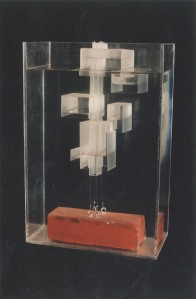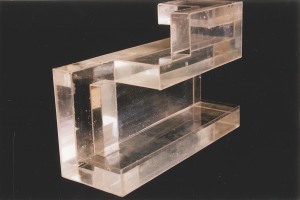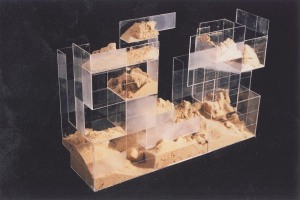In reviewing the work of advanced architecture students this past week, their ability to make form, and to apply new tools of representation to describe those forms, is quite impressive. What is troubling, however, is a lack of engagement with natural systems. They become very inventive with structure and skin when pressed, but the level of understanding and invention with natural forces is not natural to them. There is no fundamental comprehension. There is a primarily a preoccupation with contemporary stylistic devices. The schism between structure and comfort that Reyner Banham identified in 1969 is present today. I am as guilty as the next person in this – typically there is little such discussion in the studios. But it goes well beyond the design studio and dwells deep within culture. There is a lack of a direct engagement with the world. When it is hot, we put on the AC. Most Americans move from air conditioned cars to air conditioned buildings. Electricity comes from a socket in the wall, water disappears into a pipe. Americans spend some 95% of their lives indoors.
So, how do we shift this matrix?
To get to a carbon neutral world, many believe it is an issue of deploying the appropriate technology. The work being done by the Society for Building Science Educators (SBSE) is admirable. Learning the appropriate tools of analysis and design are critical to solving the climate issue as it pertains to buildings. But the technology needs to be preceded by a deeper cultural appreciation, and perhaps even a level of play. And it needs to happen earlier in a student’s education.
Most first year pedagogy involves tectonics, narrative, spatial sequencing, and ways of building skills in architectural representation. We need these skills – no doubt. So what I want to question is are these skills an end to themselves, or are they in service of a larger idea? Could that large idea be a focus on how architecture reveals the natural forces? Could we examine how architecture both shapes and is shaped by natural forces?
One semester teaching first year at Pratt many years ago, we did a project called “container space.” It was meant to be a container for air, earth and water. My colleagues chose to treat this metaphorically; I chose to treat it literally. The students were required to make containers that engaged these elements. Thus had to hold water and earth. I feel that this project holds a germ of an idea that could point the way forward. They looked hard at the properties of the material and how they interacted. One student made a floating array of volumes held down by a brick. The floating volumes were cubic, with the bottom face omitted trapping air. The brick was earth. By adding and removing air from the volumes (by blowing or sucking air through a straw), he got it to float level. Another student had water suspended in air, with an open pool at the base. The vacuum properties of air held the water in place. A third student froze water and earth together. As the ice melted, it deposited earth in a random manner, much like a glacier. Thus he incorporated the element of time as well.



